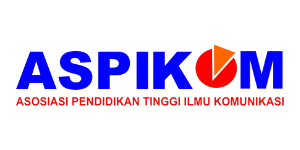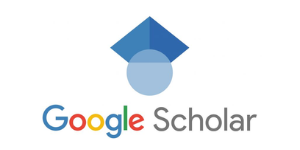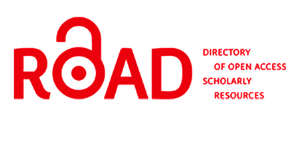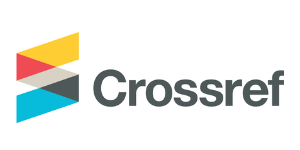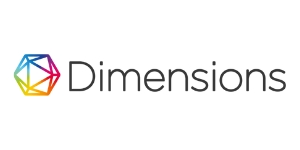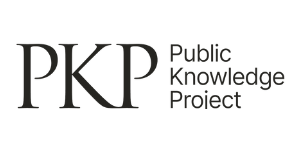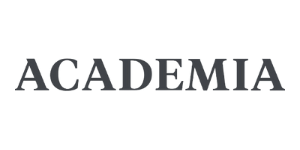Analysis of YouTube Content about Konjac as an Education of Indonesian Farmers in the Disruption Era
DOI:
https://doi.org/10.37535/105002220243Keywords:
social media, branding, konjac, YouTube, disruption eraAbstract
The konjac plant is thought to be a nutritious meal that is good for both beauty and health. Konjac exports from Indonesia to other countries grew as a result in 2020. Nevertheless, a sharp fall was observed at the end of 2021, despite the fact that many Indonesian farmers had shifted to Konjac plants. The researcher will continue the research series with Konjac plant objects in 2022 because there are so many questions and rumors surrounding this plant. The purpose of this study is to interpret the meaning of YouTube accounts that talk about konjac plants. By generating codes from all the words collected from the 30 YouTube accounts examined, the study employed a qualitative content analysis methodology. Three code frameworks were identified as being relevant to the Konjac problem: Konjac, the Government, and Export. The Government of Indonesia appealed the findings of these three regulations regarding the attitudes of farmers who support and oppose the growing of konjac. The Indonesian government is viewed as being unprepared to deal with both the farmers themselves and the global market, and thus disregards the quality of Konjac crops for export. Conclusion: In order to improve the quality of products that will be exported and brand Konjac plants for the global market, coordination and engagement between farmers and the Indonesian government are required, as well as the involvement of academics.
References
Abeysinghe, D. T., Kumara, K. A. H., Kaushalya, K. A. D., Chandrika, U. G., & Alwis, D. (2021). Phytochemical screening, total polyphenol, flavonoid content, in vitro antioxidant and antibacterial activities of Sri Lankan varieties of Murraya koenigii and Micromelum minutum leaves. Heliyon, 7(7), e07449.
Akram, W., & Kumar, R. (2017). A study on positive and negative effects of social media on society. International Journal of Computer Sciences and Engineering, 5(10), 351–354.
Albizua, A., Bennett, E. M., Larocque, G., Krause, R. W., & Pascual, U. (2021). Social networks influence farming practices and agrarian sustainability. PloS One, 16(1), e0244619.
Azumah, S. B., Donkoh, S. A., & Awuni, J. A. (2018). The perceived effectiveness of agricultural technology transfer methods: Evidence from rice farmers in Northern Ghana. Cogent Food & Agriculture, 4(1), 1503798.
Biddinika, M. K., Syamsiro, M., Novianti, S., Nakhshiniev, B., Aziz, M., & Takahashi, F. (2019). Dissemination of technology information through YouTube: a case of renewable energy technology. TELKOMNIKA (Telecommunication Computing Electronics and Control), 17(3), 1526–1538.
Bos, E., & Owen, L. (2016). Virtual reconnection: The online spaces of alternative food networks in England. Journal of Rural Studies, 45, 1–14.
Chakma, K., Ruba, U. B., & Riya, S. Das. (2022). YouTube as an information source of floating agriculture: analysis of Bengali language contents quality and viewers’ interaction. Heliyon, 8(9), e10719.
Cinelli, M., Quattrociocchi, W., Galeazzi, A., Valensise, C. M., Brugnoli, E., Schmidt, A. L., Zola, P., Zollo, F., & Scala, A. (2020). The COVID-19 social media infodemic. Scientific Reports, 10(1), 1–10.
Coggins, S., McCampbell, M., Sharma, A., Sharma, R., Haefele, S. M., Karki, E., Hetherington, J., Smith, J., & Brown, B. (2022). How have smallholder farmers used digital extension tools? Developer and user voices from Sub-Saharan Africa, South Asia and Southeast Asia. Global Food Security, 32, 100577.
Davie, G., Wang, M., Rogers, S., & Li, J. (2021). Targeted poverty alleviation in China: A typology of official–household relations. Progress in Development Studies, 21(3), 244–263.
Devaraj, R. D., Reddy, C. K., & Xu, B. (2019). Health-promoting effects of konjac glucomannan and its practical applications: A critical review. International Journal of Biological Macromolecules, 126, 273–281.
Gauba, H., Kumar, P., Roy, P. P., Singh, P., Dogra, D. P., & Raman, B. (2017). Prediction of advertisement preference by fusing EEG response and sentiment analysis. Neural Networks, 92, 77–88.
Glover, D., & Poole, N. (2019). Principles of innovation to build nutrition-sensitive food systems in South Asia. Food Policy, 82, 63–73.
Irungu, K. R. G., Mbugua, D., & Muia, J. (2015). Information and Communication Technologies (ICTs) attract youth into profitable agriculture in Kenya. East African Agricultural and Forestry Journal, 81(1), 24–33.
Karo, F., Sinaga, H., & Karo, T. (2021). The use of konjac flour as gelatine substitution in making panna cotta. IOP Conference Series: Earth and Environmental Science, 782(3), 32106.
Kirkpatrick, J., McMorrow, B., Turban, D. H. P., Gaunt, A. L., Spencer, J. S., Matthews, A. G. D. G., Obika, A., Thiry, L., Fortunato, M., & Pfau, D. (2021). Pushing the frontiers of density functionals by solving the fractional electron problem. Science, 374(6573), 1385–1389.
Minh, T. T., Larsen, C. E. S., & Neef, A. (2010). Challenges to institutionalizing participatory extension: The case of farmer livestock schools in Vietnam. Journal of Agricultural Education and Extension, 16(2), 179–194.
Mukumbang, F. C., Kabongo, E. M., & Eastwood, J. G. (2021). Examining the application of Retroductive theorizing in Realist-Informed studies. International Journal of Qualitative Methods, 20, 16094069211053516.
Prayoga, K. (2017). Pemanfaatan Sosial Media Dalam Penyuluhan Pertanian Dan Perikanan Di Indonesia. Agriekonomika, 6(1), 32–43.
Putri, A., & Oktaviani, R. C. (2022). Communication Planning: A Tool for Behavior Change. Journal of Communication and Public Relations, 2(1), 24–32. https://doi.org/10.37535/105002220233
Riley, M., & Robertson, B. (2021). # farming365–Exploring farmers’ social media use and the (re) presentation of farming lives. Journal of Rural Studies, 87, 99–111.
Riptanti, E. W., & Irianto, H. (2022). Strategy to improve the sustainability of “porang”(Amorphophallus muelleri Blume) farming in support of the triple export movement policy in Indonesia. Open Agriculture, 7(1), 566–580.
Salampessy, Y. L. A. (2022). Attitude of young farmers to on-farm business sustainability based on the behavior and success of seeking digital information related to agriculture (case of Lebak Regency, Banten Province-Indonesia). IOP Conference Series: Earth and Environmental Science, 978(1), 12037.
Sewell, A. M., Hartnett, M. K., Gray, D. I., Blair, H. T., Kemp, P. D., Kenyon, P. R., Morris, S. T., & Wood, B. A. (2017). Using educational theory and research to refine agricultural extension: affordances and barriers for farmers’ learning and practice change. The Journal of Agricultural Education and Extension, 23(4), 313–333.
Shenglin, Z., Purwadaria, H. K., Borompichaichartkul, C., & Tripetch, P. (2020). Konjac Industry in Major Producing Countries. In Konjac Glucomannan (pp. 223–254). CRC Press.
Shisler, R. C., & Sbicca, J. (2019). Agriculture as carework: The contradictions of performing femininity in a male-dominated occupation. Society & Natural Resources, 32(8), 875–892.
Siyao, P. O. (2012). Barriers in accessing agricultural information in Tanzania with a gender perspective: The case study of small‐scale sugar cane growers in Kilombero district. The Electronic Journal of Information Systems in Developing Countries, 51(1), 1–19.
Smidt, H. J., & Jokonya, O. (2022). Factors affecting digital technology adoption by small-scale farmers in agriculture value chains (AVCs) in South Africa. Information Technology for Development, 28(3), 558–584.
Soukup, C. (2006). Hitching a ride on a star: Celebrity, fandom, and identification on the World Wide Web. Southern Communication Journal, 71(4), 319–337.
Supadiyanto, S., & Murti, S. (2022). Social Media Portraits and YouTubers during the COVID-19 Pandemic in Indonesia. Technium Education and Humanities, 2(1), 35–47.
Sutjiadi, I., & Prasetya, W. (2021). Effect of Instagram Promotion towards Buying Intention and Buying Decision of Pekopurin.id. Journal of Communication and Public Relations, 1(1), 5–15. https://doi.org/10.37535/105001120212
Thakur, D., & Chander, M. (2018). Use of social media in agricultural extension: Some evidences from India. International Journal of Science, Environment and Technology, 7(4), 1334–1346.
Tomaselli, K. G., & Tomaselli, D. R. (2021). New media: Ancient signs of literacy, modern signs of tracking. New Techno Humanities, 1(1–2), 100002.
Ueno, H., Haraguchi, N., Azuma, M., Shiiya, T., Noda, T., Ebihara, E., Uehira, Y., Uchida, T., Sasaba, K., & Nakamura, M. (2023). Active consumption of konjac and konjac products improves blood glucose control in patients with type 2 diabetes mellitus. Journal of the American Nutrition Association, 42(2), 123–129.
Uy, M. A., Foo, M.-D., & Aguinis, H. (2010). Using experience sampling methodology to advance entrepreneurship theory and research. Organizational Research Methods, 13(1), 31–54.
Wulandari, R., Witjaksono, R., & Wati, R. I. (2021). The Role of Agricultural Extension Workers in Urban Agriculture Development During the Covid-19 Pandemic in Yogyakarta City, Indonesia. 1st International Conference on Sustainable Agricultural Socio-Economics, Agribusiness, and Rural Development (ICSASARD 2021), 20–30.
Yunus, U., Rizkiansyah, M., Ariestyani, A., Trenanto, Y., & Alim, S. (2021). Effectiveness of information media for the improvement of Indonesian farmers’ knowledge and skills. Journal of Theoretical and Applied Information Technology, 99(12), 2952–2963.
Zhou, R., Khemmarat, S., Gao, L., Wan, J., & Zhang, J. (2016). How YouTube videos are discovered and its impact on video views. Multimedia Tools and Applications, 75, 6035–6058


